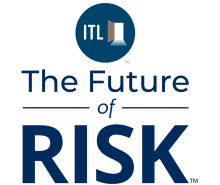Insurance fraud is caught in an endless game of cat and mouse. When fraudsters up the game, insurers get smarter about detection. But now, fraud is outpacing detection capabilities at an alarming rate. While carriers cling to conventional detection methods, fraudsters are already exploiting AI and advanced analytics to orchestrate undetectable schemes. The window for insurers to get ahead of the problem is rapidly closing.
To help carriers better understand the current impact of fraud and how it might evolve in the coming years, my team compiled the Online Fraud Insights report. By combining both quantitative data analysis and qualitative insights from our subject matter experts, we identified trends, patterns, and anomalies in fraudulent behavior related to injury claims, helping insurers evolve alongside tech.
Drivers of Insurance Fraud
When examining regional hotspots for fraud, we identified multiple demographic trends in the data:
● Higher Population, More Fraud: Cities and states with a high population density were more likely to fall victim to fraud. States like New York and Massachusetts ranked high for insurance fraud per capita, alongside cities such as Los Angeles and Houston. An increase in population comes with a higher likelihood of urban fraud rings that orchestrate staged accidents and fraudulent injury claims.
● Tourism Creates Fraud Hotspots: We identified high levels of fraud in tourism hubs like Nevada, Florida, and Louisiana. These vacation spots experience a constant influx of visitors, gig workers, and seasonal residents, leading to an increase in fraudulent injury claims related to slip-and-fall accidents, auto accidents, and workers' compensation claims.
Along with demographic indicators of insurance fraud, there were also legal environments that contributed to certain states having higher rates of insurance fraud.
● Legal Loopholes for Fraud: Certain states, such as Florida, Georgia, and South Carolina, have more claimant-friendly legal frameworks, making it easier for claimants to defraud their insurance companies by navigating loopholes in the laws. Additionally, states like New York and Florida have no-fault auto insurance laws, which require insurance companies to pay medical claims regardless of who caused the accident. This system is frequently exploited, creating an environment for fraudulent injury schemes, where doctors and attorneys collaborate to inflate medical expenses, over-treat injuries, or create fraudulent medical documentation.
● Inflated Claims from Attorney-Heavy Markets: More generally, the presence of strong personal injury attorney markets leads to higher levels of fraud. Active personal injury attorney markets, where individuals are encouraged to file claims through aggressive advertising campaigns, can be found in states like Connecticut, Florida, Georgia, and South Carolina. Some law firms even go so far as to coach claimants on how to maximize settlements. This can lead to exaggeration or outright fraud, often without claimants realizing the consequences. Unfortunately, this benefits attorneys who get to cash in on the claim and leave their clients to face the legal consequences.
The Culprits of Fraud
No need to play the generational blame game -- our data proved that fraud was committed by adults of all ages. Still, each cohort had unique attributes that carriers should be aware of as they analyze insurance fraud.
As the youngest generation in the data, Gen Z was far more likely to trigger physical activity and unlawful activity-related flags than people over 35. Younger adults are more prone to riskier behaviors and are sucked in by cultural pressure to overshare on social media, exposing their fraud online. For this reason, it's no surprise that claimants ages 18-25 ranked No. 1 for fraud found on Instagram and TikTok.
In the thick of their career life, Millennials were most likely to be identified for workplace-related fraud. Claimants aged 25-44 were most likely to be flagged due to their association with a business and had the highest percentage of fraud found because of activity on LinkedIn. Gen X fraudsters demonstrated similar behavior to their millennial peers, but with a higher income and more flexibility, this group was slightly more likely to be flagged for travel-related fraudulent activity. In general, those over 35 are more likely to publicly discuss their illness, pain, or injuries. Sometimes, this reinforces their claims, and other times, directly contradicts them.
Unsurprisingly, Facebook was the outlet of choice for Baby Boomers, who had the highest percentage (80%) of fraud found through the platform. Claimants over 65 also had the highest rates of fatality flags, possibly pointing to intentional or unintentional casualty fraud.
As we examined the lines of business most likely to be flagged as fraudulent, auto and workers' compensation claims accounted for the majority of flagged alerts in terms of raw volume. Even so, the highest referral rate to SIU teams came from disability claims, with 8.9% of monitored cases surfacing strong enough contradictions to warrant further investigation. Fraud alerts in disability lines are found mostly through a claimant's association with another business, suggesting claimants are reporting injuries from side gigs or personal businesses through their employer.
Insurance Fraud Predictions
Over the next five years, we predict fraudsters seeking larger payouts will become more creative. Insurers can expect an increase in sophisticated deception tactics, designed and optimized using artificial intelligence.
In the coming years, we anticipate a renewed focus on the regulatory environment in the U.S. This will shift policy toward insurer collaboration, an essential tool to increase fraud prevention rates. We also predict that insurers will increasingly use AI-driven risk assessments to identify high-risk claims, fighting fire with fire with more scalable, efficient operations. By changing the regulatory environment and adopting advanced detection strategies, carriers can effectively stay ahead of emerging fraud.







